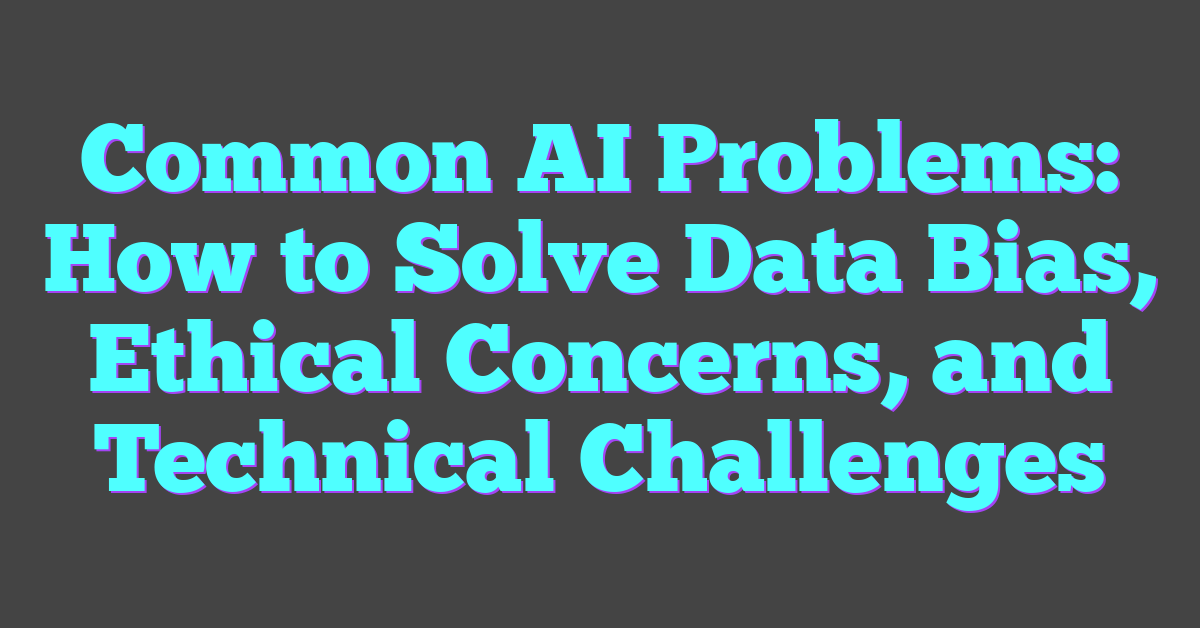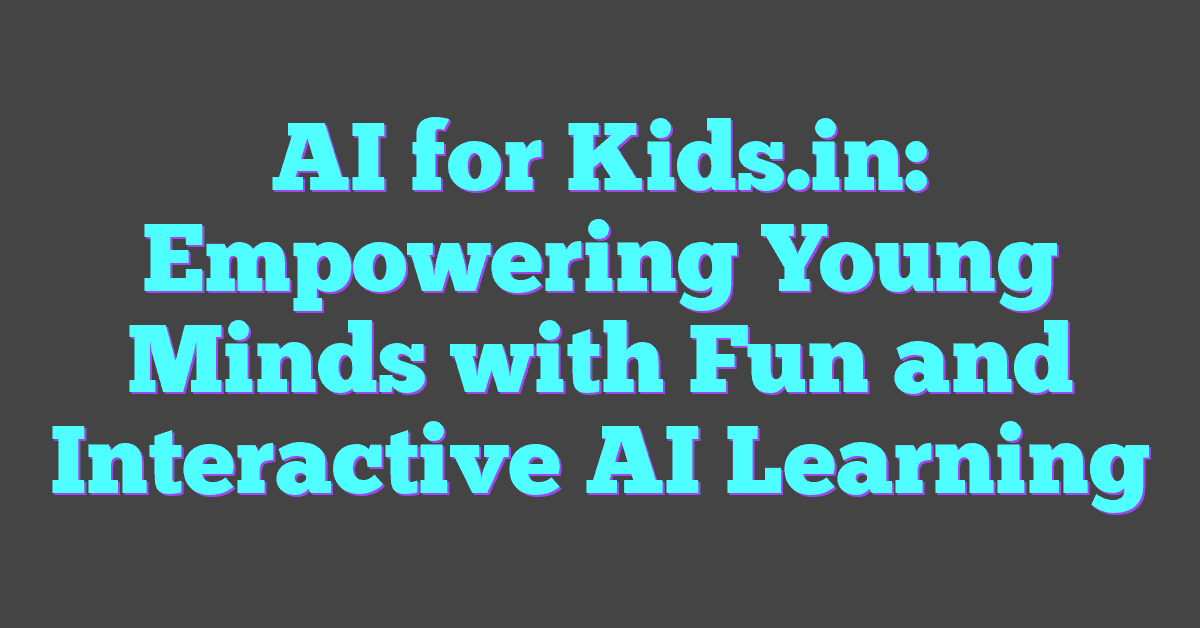Artificial Intelligence (AI) has revolutionized industries, from healthcare to finance, promising to reshape our world. But like any powerful tool, AI comes with its own set of challenges that can’t be ignored. As more organizations integrate AI into their operations, understanding these common problems becomes crucial.
From data privacy concerns to algorithmic biases, AI’s rapid evolution brings a host of issues that demand attention. Missteps in AI implementation can lead to significant setbacks, making it essential for businesses and developers to stay informed. Let’s explore some of the most prevalent problems faced by AI today and how they impact both technology and society.
Overview of Common AI Problems
AI brings numerous benefits, but it also comes with significant challenges. Understanding these common problems is crucial for successful AI implementation.

Understanding Data Bias
Data bias occurs when training data are unrepresentative of the population in question, leading to skewed AI results. For example, if an AI is trained on predominantly male resumes, it may favor male applicants. Addressing this bias involves diverse data collection, data augmentation, and bias detection techniques. Correcting biases ensures fairer and more accurate AI outputs, fostering trust in AI systems.
Algorithmic Complexity and Errors
Algorithmic complexity refers to the intricate nature of AI algorithms, which can lead to errors. Complex algorithms may behave unpredictably, especially under conditions not represented in training data. These errors can manifest as inaccurate predictions, misclassifications, or unintended outcomes. Simplifying algorithms where possible, rigorous testing, and continuous monitoring can mitigate these issues. Addressing complexity and errors ensures AI systems remain reliable and effective across various applications.
Ethical Issues in AI
Ethical issues in AI present complex challenges that impact the adoption and trust in AI systems. Addressing these concerns is crucial for the technology’s sustainable growth.
Privacy and Security Concerns
AI systems gather and process vast amounts of data, raising significant privacy and security concerns. With sensitive information at risk, unauthorized access, data breaches, and misuse become critical issues. Companies must implement strong encryption protocols, access controls, and continuous security audits to safeguard information. Regular security training for employees also minimizes human errors that could compromise data integrity.
Transparency and Accountability
Transparency and accountability in AI are essential for building trust and ensuring compliance with ethical standards. The opaque nature of some AI algorithms, especially deep learning models, can make it difficult to understand how decisions are made (e.g., loan approvals, medical diagnoses). Organizations must provide clear explanations of AI decision-making processes, making them interpretable and justifiable. Establishing accountability mechanisms helps in identifying and addressing biases and errors in AI systems, promoting fair outcomes and regulatory compliance. Effective documentation and maintaining audit trails further enhance transparency.
Technical Challenges and Solutions
AI and machine learning present various technical challenges, but solutions exist to overcome them, ensuring robust and effective systems.
Overcoming Data Scarcity
Data scarcity poses a significant challenge in AI development. Limited data can hinder the training of accurate models. Techniques like data augmentation, synthetic data generation, and transfer learning can help mitigate data scarcity.
- Data Augmentation: Enhances the training set by generating additional data from existing datasets. For example, image transformations like rotation, cropping, and flipping.
- Synthetic Data Generation: Uses technologies such as Generative Adversarial Networks (GANs) to create new data points. This approach is valuable in medical imaging where real data is scarce.
- Transfer Learning: Leverages pre-trained models from related domains to transfer knowledge. Effective in scenarios with limited data, such as natural language processing (NLP) tasks.
Improving Model Generalization
Model generalization ensures that AI systems perform well on new, unseen data. Poor generalization leads to overfitting, where models perform well on training data but poorly on test data. Methods like cross-validation, regularization, and dropout techniques enhance model generalization.
- Cross-Validation: Involves partitioning data into subsets to validate the model multiple times. Common techniques include k-fold cross-validation.
- Regularization: Adds a penalty to the loss function to prevent overfitting. Common forms are L1 and L2 regularization.
- Dropout Techniques: Temporarily drops units from the neural network during training to prevent overfitting. This makes the model more robust and ensures better performance on new data.
Effective strategies like data augmentation, synthetic data generation, and model regularization contribute significantly to overcoming technical challenges in AI development.
Future Trends in Addressing AI Problems
AI continues to evolve, offering improvements and solutions to existing challenges. Identifying and incorporating future trends helps tackle common AI problems efficiently.
Advances in AI Fairness
AI fairness has garnered significant attention. Researchers focus on mitigating bias in algorithms, especially those affecting marginalized communities. Techniques like adversarial debiasing and fairness-aware machine learning models have emerged. These methods reduce biases by training models on balanced datasets or adjusting their decision-making processes.
AI fairness tools, such as IBM’s AI Fairness 360 and Google’s What-If Tool, aid developers in identifying and addressing biases. These open-source toolkits offer practical solutions to evaluate and improve the fairness of AI models. Encouraging transparency in data collection and algorithm design further enhances AI fairness.
Innovations in AI Robustness
Ensuring AI robustness is essential for reliable deployment. Researchers develop new techniques like adversarial training and defensive distillation to protect models from adversarial attacks. These techniques enhance model resilience by exposing them to perturbed data during training.
Few-shot learning and meta-learning enable robust AI systems to perform well with limited data. These methods allow models to generalize from very few examples, ensuring consistent performance despite varying data quality and quantity.
AI robustness also improves through neural architecture search (NAS), which automates the design of neural networks. NAS identifies optimal architectures that maintain high performance even in challenging environments.
By incorporating these advancements, the AI community aims to create more equitable, reliable, and robust AI systems that effectively address current challenges.
Conclusion
AI holds immense potential to revolutionize various sectors but it’s crucial to navigate the common challenges it presents. By addressing data bias and algorithmic complexity, we can build more trustworthy systems. Ethical concerns like privacy and transparency need ongoing attention to maintain public trust.
Technical solutions such as data augmentation and transfer learning help mitigate data scarcity issues, while techniques like cross-validation and regularization improve model robustness. Future advancements in AI fairness and robustness promise even more reliable and equitable systems. Embracing these solutions and innovations will ensure that AI continues to evolve in a responsible and impactful manner.
Frequently Asked Questions
What is the impact of AI on industries?
Artificial Intelligence (AI) has had a transformative impact on various industries by automating tasks, improving operational efficiency, and enabling advanced data analytics, which leads to better decision-making and innovation.
What are the main challenges in AI adoption?
The main challenges in AI adoption include data bias, algorithmic complexity, ethical concerns such as privacy and security, and ensuring transparency and accountability in AI systems.
How can data bias in AI be addressed?
Data bias can be mitigated by using diverse and representative datasets, implementing fairness algorithms, and continually monitoring and updating AI models to ensure they remain unbiased.
What are some solutions to address data scarcity in AI?
Solutions to data scarcity include data augmentation, synthetic data generation, and transfer learning, which leverage existing data and pre-trained models to enhance AI training.
How can AI models be improved to prevent overfitting?
AI models can be improved to prevent overfitting through methods such as cross-validation, regularization, and dropout techniques, which promote better generalization and robustness.
What ethical concerns are associated with AI?
Ethical concerns in AI include issues of privacy, security, transparency, accountability, and ensuring AI systems do not perpetuate or exacerbate biases.
What are some future trends in mitigating bias in AI algorithms?
Future trends to mitigate bias in AI algorithms include advances in AI fairness techniques, significant research in bias detection, and the development of more inclusive and equitable training datasets.
What advancements are being made to enhance AI robustness?
Advancements in AI robustness include techniques like adversarial training, defensive distillation, few-shot learning, meta-learning, and neural architecture search, which improve resilience and performance in challenging environments.
Why is transparency important in AI?
Transparency is crucial in AI to ensure that decision-making processes are understandable, explainable, and can be scrutinized, which helps to build trust and accountability in AI systems.
What does AI accountability involve?
AI accountability involves implementing measures to ensure AI systems are responsible for their actions, with clear guidelines and standards for monitoring and addressing potential issues arising from AI implementation.




